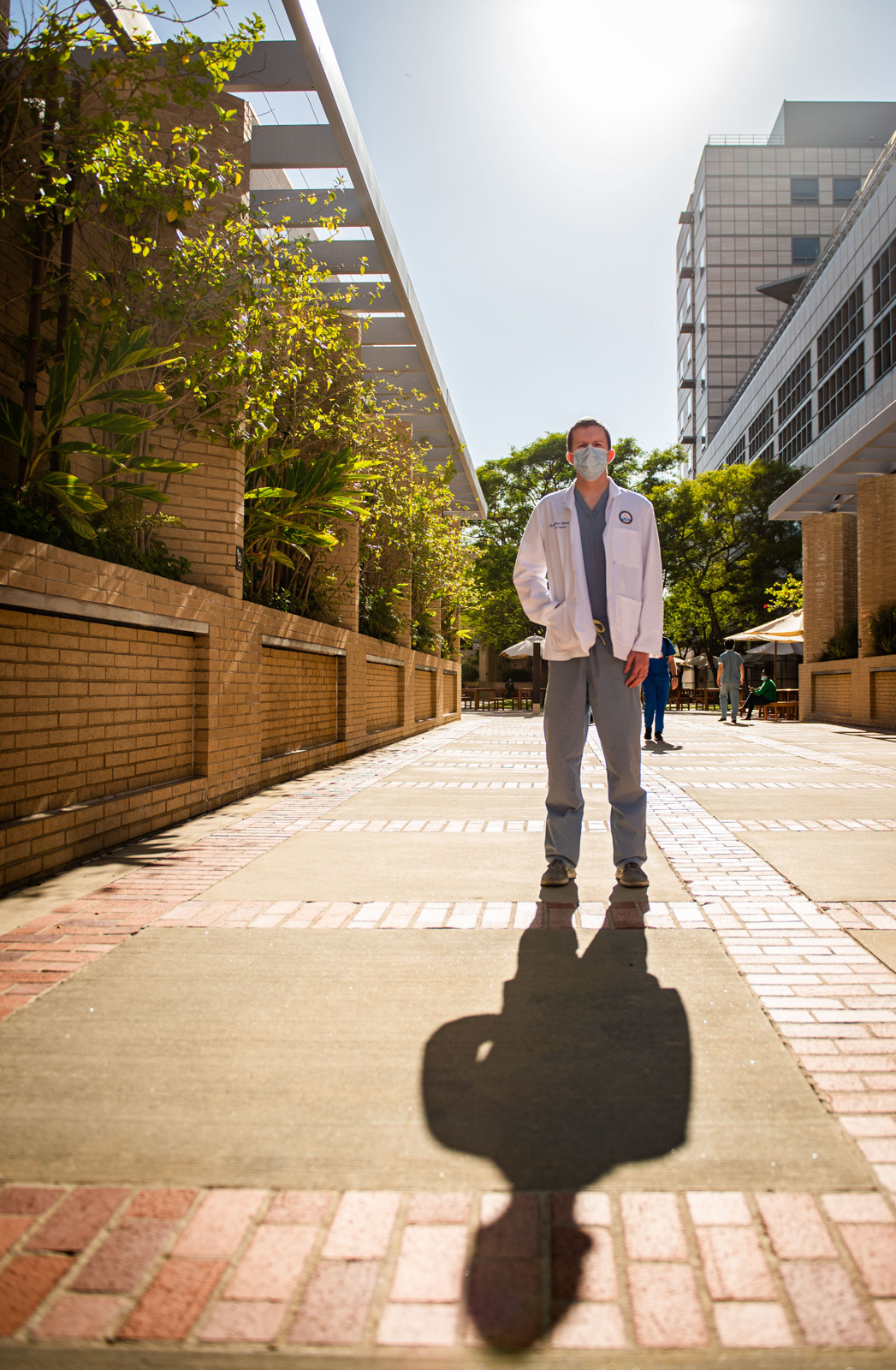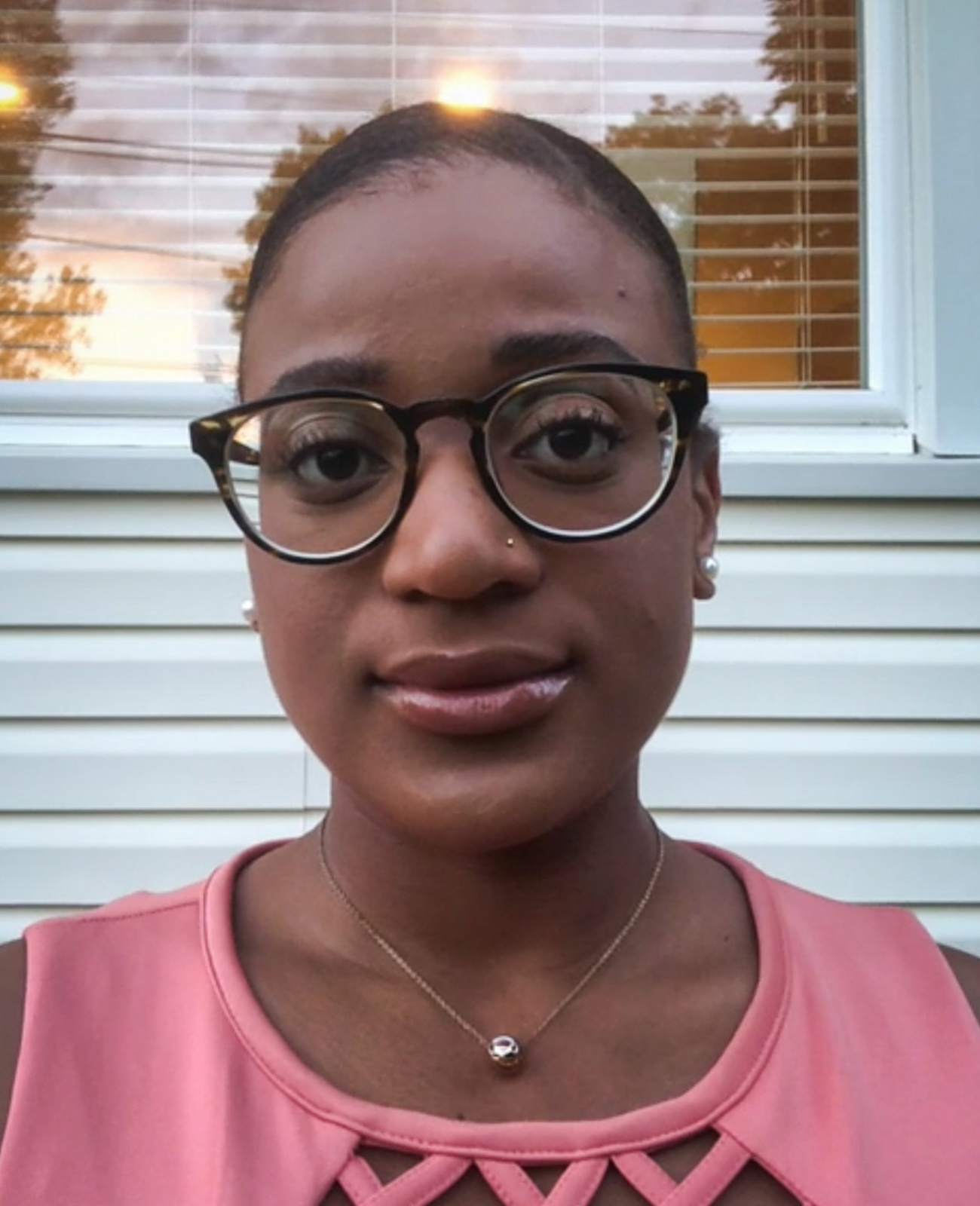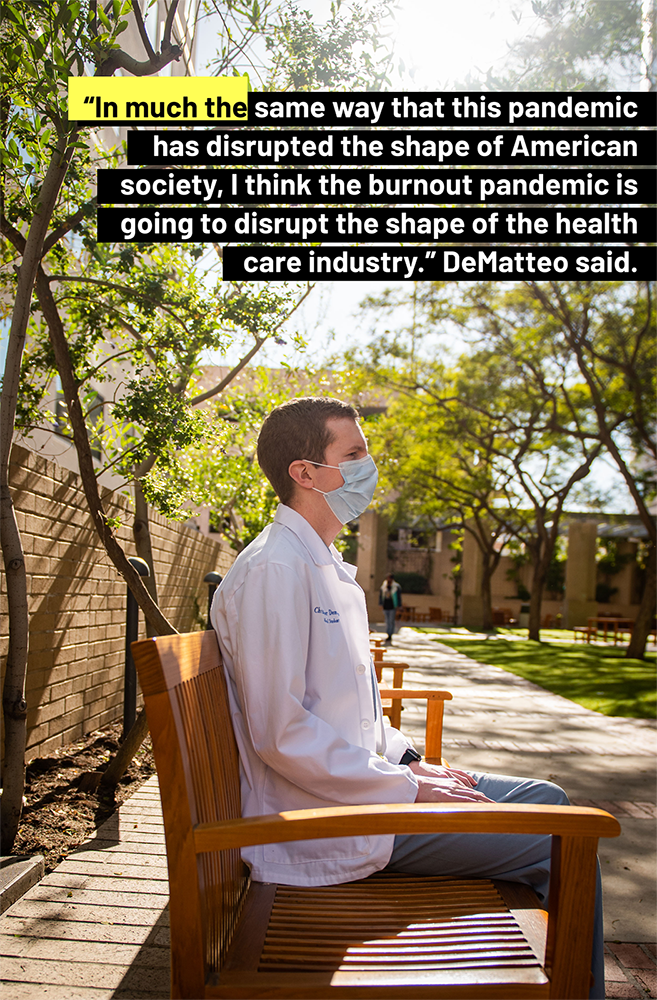(MacKenzie Coffman/Daily Bruin senior staff)
By Zinnia Finn
June 12, 2020 at 3:48 a.m.
Match Day. The start of residency. Burnout. Medical school graduates are entering the workforce during an unprecedented pandemic, and their experiences will be vastly different from those before them.
At 7 a.m. on March 20, Geffen Hall was slated to be packed with fourth-year medical students and their families, the air charged with anticipation. An hour later they would rip open envelopes validating their last four years of work and detailing the next chapter of their journey: where they would practice their medical residency. Shouts would resonate, hugs would ensue and order would quickly descend into excited frenzy.
For three years, Chris DeMatteo had watched this scene unfold below him, packed shoulder to shoulder on balconies with fellow first-, second- and third-year medical students still awaiting their own Match Day. He distinctly recalls imagining what his would look like, picturing the view from the crowded courtyard as opposed to yards above.
Instead, DeMatteo’s Match Day consisted of clicking on an email alone in his studio apartment while stuck inside because of the ongoing COVID-19 pandemic.
Medical students had submitted their rank order lists of the residency programs they were interested in on Feb. 26, less than a month before COVID-19 erupted in the United States. Their decisions were made without an understanding of the new normal ushered in by the pandemic – uncertainties in travel or establishing connections at the start of residency.
“If we were all making this decision today, the match would probably look a lot different from how it looked (then),” said DeMatteo, who is entering an emergency medicine residency program at Mount Sinai in New York City. “I think people would have preferred to stay closer to their home, closer to their families.”

With a slight longing in his voice, I wondered if a part of the David Geffen School of Medicine alumnus wishes he’d made a different choice, his current program being across the country from his family in Moraga, California.
Even for those staying close to home, the virus has created distance where, geographically, there is none.
School of Medicine alumna Jasmin Neal is entering a general surgery program at Long Island Jewish Medical Center. Neal is moving closer to home on the East Coast, but won’t be able to see her parents, who are just a state away in New Jersey, because of risk of exposure to COVID-19.
These fresh graduates’ experiences, both as interns and attending physicians, will be completely different from every class before them.
Training modules will most likely be virtual, said alumna Haley Vertelney, who is preparing to head to UC San Francisco. The experiences of residents in some specialty programs, such as obstetrics and gynecology, are being completely altered. At the workplace of one of her closest friends, an OB-GYN resident in New York, Vertelney said the labor and delivery floor has been completely transitioned into a COVID-19 ICU. Instead of caring for new mothers, now she is only seeing COVID-19 patients.
Emergency medicine is changing, too. Although residents will still work chiefly in the emergency room, DeMatteo foresees a drop in treating the textbook heart attacks and strokes, and a marked increase in upper respiratory pathologies. He hypothesized that he and his peers will become intimately familiar with ventilator settings and be the first to note any new hallmark symptoms of the virus.
DeMatteo was originally drawn to the diversity of the cases he would treat in the specialty and the adrenaline rush that accompanies the detective work of diagnosing an unknown illness. The pandemic will put a hold on this breadth and excitement, but DeMatteo emphasized that the spirit of emergency medicine is being able to face anything that comes through the door.
But the recent graduates will be stepping foot into their new hospitals at a time when the medical landscape is entering uncharted territory. Amid the pandemic, advice that generations of residents before could provide may no longer be as applicable to this year’s interns.
As the burden on health care workers increases, the threat of burnout – emotional exhaustion and depersonalization because of long-term stress – is more prominent than ever. Every new MD I spoke with voiced it as a pressing concern, with DeMatteo dubbing it the “other pandemic.”
According to the Medscape National Physician Burnout, Depression & Suicide Report from 2019, 44% of practicing physicians report feeling burned out, with 34% attributing this feeling to lengthy work hours. Thirty-one percent of those surveyed managed their burnout through a decrease in work hours; however, with the demands of the pandemic, this may become impossible.
The COVID-19 pandemic will bring the growing issue of burnout to a breaking point – since the onset of COVID-19, signs of PTSD and the rates of depression and suicide among physicians are twice the national average, DeMatteo said, based on in-depth research he conducted toward the end of medical school.
The push of new physicians into the workforce alongside the increased health care burden will call for sensible work hour limits, increased access to mental health resources and hospital culture focused on support and compassion more than before.
“In much the same way that this pandemic has disrupted the shape of American society, I think the burnout pandemic is going to disrupt the shape of the health care industry.” DeMatteo said.

While quarantined at her mother’s home in Palo Alto, California, Vertelney said she pondered the toll that burnout places on one’s mental health and additional anxiety that may be brought about by the pandemic. This weight has already given her “fear fatigue,” and she admits that she’s reached the point where she’s expecting to contract the coronavirus.
Stacked on top of these worries are concerns that the government hasn’t consistently prioritized health care workers, Vertelney said. Although practicing medicine is one of her lifelong goals, her excitement has been stunted by a shortage of basic health care equipment and personal protective equipment. In the shadow of this burden lies the likelihood of a second COVID-19 wave.
“I guess I’m just trying to have low expectations,” said School of Medicine alumnus David DiTullio. “At first we thought, ‘Oh wow, if it’s two months, that’s such a long time,’ but it’s been two months. … It starts to get overwhelming at just the thought of a second wave.”
Not only will the pandemic place a strain on these newly minted physicians within the hospital walls, but it also threatens their work-life balance. The few hours they have off, previously reserved for evenings out or morning hikes, are now more likely to be spent in solitude, they said.
“You go to work forever, and then I’m going to go to my one-bedroom apartment and be alone until I go to work again,” Vertelney said.
Even when bars and hiking trails begin to reopen, there is a certain level of commitment to society which will prevent health care workers from taking part, DeMatteo said. With the recent reopening of businesses, many people may be taking reentry for granted, hoping to celebrate warmer days at coffee shops or catch summer releases at local theaters.
But for many health care workers, this isn’t the case.

For those in hospitals, even something as simple as helping a neighbor move into their apartment comes with complications in the era of COVID-19, DeMatteo said.
“It makes me nervous to do things like go grocery shopping or go to Ikea and pick up furniture,” he added. “My risk of infection is high, and I could be a carrier, and I have a duty to not infect those around me.”
For Vertelney, trouble arose as she was preparing her move to San Francisco during the height of the stay-at-home order. She was still able to rent a U-Haul truck, but had to work around inconvenient hours and plan ahead to disinfect the vehicle. This involved bleaching the whole truck and letting it air out until any and all germs were eradicated. Instead of hiring movers, she had to enlist her mom, who is 61, to help lift all of the furniture into the truck.
Even when their moves are complete, the lives these health care workers previously imagined in late February will be far from reality – likely for months.
“I don’t think New York is really planning on becoming like it was anytime soon,” said DiTullio, who ranked the city in part for its vibrant culture.
Residency may now be characterized by wandering down vacant streets that were once famous for bustling, and finding cafes that were old local gems with their doors permanently shut, he said.
Before jumping in the waters of residency, Neal has been using her time to reflect on why she became a doctor in the first place, she said. She recalled the classic line of “wanting to help others,” noting that there has never been a more vital time to do so, at least in her lifetime. COVID-19 has created an unprecedented need for compassionate and committed health care workers, which has rekindled her desire to become one, she said.
“It’s a strange mix of emotions that we’re all feeling right now, and I think there’s this deep-seated anxiety about the health and safety of ourselves and family members, and society as a whole,” DeMatteo explained, building on Neal’s sentiment. “But there’s also this incredible opportunity to join the workforce at a time when we’ve never been more needed and have so much to learn.”
